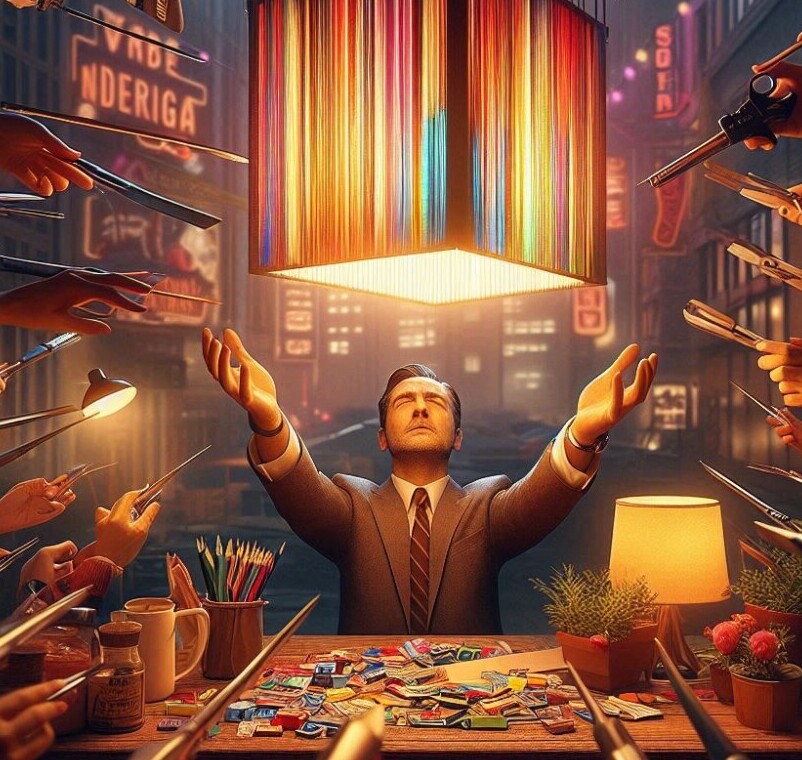
Color plays a powerful role in shaping how we perceive the world, and this holds true for the digital spaces we navigate; mastering color psychology in web design goes beyond simply choosing shades that look good together.
Color psychology isn’t just about picking your favorite color and calling it a day in web design. It’s a nuanced tool that can shape how folks interact with your site. Understanding its basics helps craft a compelling digital presence.
The roots of color psychology trace back to early studies on how different hues affect human emotions and behaviors. While we’re not dealing with ancient cave paintings anymore, those early insights still hold power today. In the digital age, using these insights can make or break how users experience your space.
Humans perceive colors in ways that influence mood and decisions. For instance, ever notice why fast-food brands splash red everywhere? It’s a color known to evoke excitement and hunger. Similarly, blue often gets chosen for corporate websites, as it typically induces feelings of trust and professionalism.
From a web design perspective, color psychology bridges aesthetics with functionality, but doing it right requires more than just a good eye. Understanding the basics of the psychological effects of colors on human perception is vital, along with knowing how these perceptions differ across cultures.
Now, where does SEO fit in here? Interweaving color psychology with web design doesn’t just create beauty; it attracts and retains visitors, boosting search engine performance. Knowledge in this area supports mindful keyword integration that complements visual strategies, enhancing user engagement and optimization.
The Role of Colors in Influencing User Behavior
Colors have a direct line to our emotions, steering how we feel and act. On a website, they aren’t just decorative; they’re strategic tools in the designer’s toolkit.
Let’s think about how warm colors like red and orange come across. Red gets folks’ hearts racing, often creating a sense of urgency. Great choice for a flash sale banner! Orange, on the other hand, is perfect for call-to-action buttons because it exudes confidence and enthusiasm, nudging users towards clicking.
Blue’s calming vibe makes it ideal for sites wanting to convey trust and reliability. You’ll see it a lot with banks and hospitals for this reason.
Green often wraps itself in nature and health themes. Its reputation for balance and growth makes it a perfect match for wellness brands and products.
Cultural context matters. In Western societies, white is clean and fresh, but in some Eastern cultures, it symbolizes mourning. Your audience’s background can heavily sway how a color is perceived.
Understanding these psychological responses means you can guide visitor actions more effectively—crafting an experience that aligns seamlessly with what your audience needs and expects.
Strategically using colors can transform the typical visitor into a regular user, just by stirring up the right feelings and instilling confidence in your site’s functionality.
Strategically Implementing Colors in Web Design

Picking the right colors is about more than just getting that perfect shade of blue. It’s about practicality, creating a balance that’s easy to engage with and hard to forget.
Think of color schemes like a wardrobe; you want pieces that work well together. Choose a primary color that aligns with your brand’s voice, and then build a palette that complements it. This ensures a cohesive look across your site, enhancing the user experience.
Aesthetic appeal should never compromise usability. High contrast between text and background is non-negotiable. Not only does it make reading easier, but it also steps up usability for visually impaired users. It’s the kind of forward-thinking that reflects a brand’s inclusivity and awareness.
Looking at successful brands, they often have distinct colors that instantly scream their identity. Spotify’s playful green, for instance, echoes its dynamic and modern feel.
Leveraging tools like color palette generators can ease the design process. These resources offer pre-made palettes that take the guesswork out, letting you focus more on perfecting your site’s functionality.
Testing the waters is crucial. Play around with different combinations and get feedback from diverse audience groups. A/B testing helps pinpoint what clicks and what doesn’t. This iterative process is key to refining the user experience.
Incorporating thoughtful design requires thinking like a user. Always step into their shoes to forecast reactions, ensuring that the journey through the site both captivates and comforts.
SEO Best Practices: Leveraging Color Psychology for Better Rankings
Color psychology isn’t just about creating a pretty site; it’s a critical part of the engine driving user engagement and satisfaction, which in turn boosts search engine rankings.
When visitors resonate with the visual story your site tells, they hang around longer, navigating across pages, leading to improved metrics like lower bounce rates and more time on site. These positive interactions signal to search engines that your site’s worth pushing to the top.
Keywords related to color can play a significant role here. Words that capture the essence of your palette and the mood it conveys should seamlessly integrate into your content, headlines, and tags. These subtle, thematic keywords reinforce the visual brand message, making your site more discoverable.
Accessibility is non-negotiable. Ensuring that your color choices cater to a wide range of users, including those with visual impairments, bolsters trust and inclusivity, further pleasing search engines that reward user-friendly sites.
Testing the effectiveness of your color strategy involves tracking how different schemes perform with real visitors. Use analytics to watch for changes in engagement, experimenting with adjustments until you nail the combo that resonates best.
Ultimately, marrying color psychology with SEO strategies doesn’t just draw eyes to your site. It creates a connection that drives interaction, builds loyalty, and stands out in the crowded digital landscape.
Kindly leave your comments below.
**Here’s a little transparency: Our website contains affiliate links. We may receive a small commission if you click and make a purchase. Don’t worry, as there’s no extra cost to you. It’s a simple way to support our mission of bringing you quality content.
Related:

As a psychologist, I know that approximately 8% of men have red-green color blindness, which makes it the most common form of color vision deficiency. This condition, also known as deuteranomaly or protanomaly depending on the exact nature of the deficiency, affects the ability to distinguish between red and green hues. In addition, about 1 percent of women have this inability to see red and green
Often they see Reds as Browns or Muted Yellows: Reds may appear more like brownish-yellow or muddy hues.
Greens as Beige or Grayish Colors: Greens can appear as beige, dull yellow, or even gray, depending on the intensity and context.Colors that contain red or green may look very similar, causing difficulty differentiating between shades of pink, purple, brown, and orange.
Given that nearly one in ten people suffer from this, do you think it is something that web designers should consider?
A great article by the way
Hello Catherine,
I appreciate your in-depth analysis and contributions to the article.
Your professional, comprehensive analysis and expertise went a notch further to highlight the fact that the use of contrasting colors and designs is essential and can tremendously increase user engagement level with a website.
I totally agree with you that color vision deficiencies are great factors to put into consideration in web accessibility, especially red-green color blindness.
Thank you for your insight and your support.
– Makinde